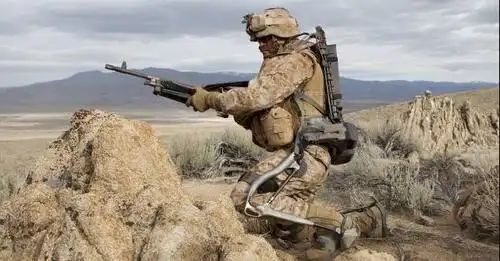Military Powered Exoskeleton Market Research 2025-2031
Wednesday,15 Jan,2025

What is a Military Powered Exoskeleton?
Military Powered Exoskeleton refers to a class of wearable devices that enhance the user's physical capabilities through an external power system.
Exoskeletons increase a soldier's weight capacity, endurance, as well as dexterity and speed of movement in combat environments. Additional power is provided to the user through a motorized, hydraulic, or pneumatic system to help reduce fatigue and increase combat effectiveness while the soldier performs his or her duties.
Types and Applications
Full-body exoskeleton: covers the entire body and provides maximum physical enhancement, including increased strength, speed, and endurance. Suitable for heavy combat missions.
Partial Body Exoskeleton: Covers only a portion of the body, such as the legs or back, and is used for specific tasks, such as carrying heavy loads or enhancing lower extremity strength. Commonly used for patrol or rapid response missions.
Active Exoskeleton: Utilizes electrical or hydraulic actuation to actively assist the user's movement. Suitable for scenarios requiring high intensity work.
Passive exoskeleton: does not require external power, supports the body through mechanical structure to reduce muscle fatigue. Mainly used for prolonged weight bearing.
Application areas:
Enhance physical capabilities: help soldiers carry heavier equipment and extend mobility time.
Reduce casualty rate: reduce musculoskeletal injuries caused by weight bearing.
Improve mission efficiency: provide higher mobility in complex terrain or hazardous environments.
Military Powered Exoskeleton Industry Analysis
The United States leads the way in the development of military exoskeletons in North America, with programs such as DARPA's Warrior Web and Exoskeleton demonstrating its leadership in technological innovation.
European countries such as the UK and Germany are also active in research and development. The UK's Defense Science and Technology Laboratory (DSTL) is exploring scenarios where exoskeletons could be used to empower soldiers. Defense technology companies in the Asia-Pacific region China, South Korea and Japan are developing their own versions. Japan's Cyberdyne is known for its HAL (Hybrid Assistive Limb) technology for military and civilian applications.
Other regional Middle Eastern countries such as Israel are also conducting relevant research, but the overall market is relatively slow to develop.
The military powered exoskeleton market is undergoing a rapid development phase with technological advancements and military modernization needs driving the growth of the market. According to the study, the global exoskeleton market is expected to reach USD 370 million by 2028, growing at a CAGR of 38.6%, with a significant share of the military market.
Case Study
U.S. Army's TALOS project: aimed at developing an “Iron Man armor” that incorporates exoskeleton technology to improve soldiers' survivability and combat effectiveness. The program was terminated in 2019, but its findings have spurred subsequent technology development.
Lockheed Martin's ONYX: demonstrated in trials how an exoskeleton can reduce knee stress and improve soldier mobility in difficult terrain.
South Korea's ArmSuit: developed by the Korea Defense Science and Technology Research Institute (KDSTI), the ArmSuit focuses on strengthening the upper extremities to improve soldiers' weapon handling in combat.
Industry Professionals' Perspectives
Defense technologist, Dr. Jonathan Harris: “Exoskeletons have the potential to not only increase strength, but to reduce soldier casualties and improve mission success on the battlefield.”
Military Gear Developer, Alexandra Kim: “The challenge seen is how to provide enough power and usage time while maintaining lightness.” (Source: International Defense Exhibition 2024)
Military Powered Exoskeleton Q&A
Q1: What are the main types of military powered exoskeletons?
A1: The main types are full-body exoskeletons, partial-body exoskeletons, active exoskeletons, and passive exoskeletons.
Q2: What are the application scenarios of military exoskeleton?
A2: Mainly used to enhance physical capabilities, reduce casualty rate and improve mission efficiency.
Q3: Which regions are leading in the development of Military Exoskeleton market?
A3: North America, especially the U.S., and China, Japan, and South Korea are leading in the Asia Pacific region.
Q4: What are the future trends in the military exoskeleton market?
A4: Future trends will focus on lighter designs, longer endurance, and smarter control systems to meet the demands of different operational environments.

